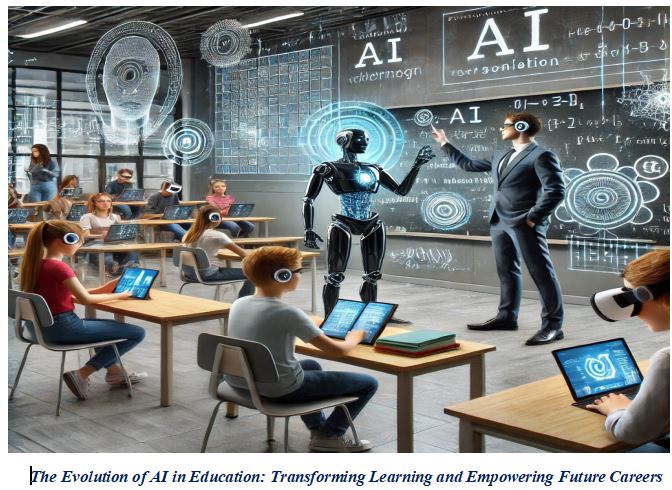
In recent years, the landscape of education has undergone a profound transformation, driven largely by technological advancements that continue to redefine traditional learning paradigms. Among these innovations, the AI Homework Helper stands out as a revolutionary tool that is changing how students approach their studies and how educators deliver their curriculum.
The Digital Classroom Revolution
Today’s educational environment bears little resemblance to classrooms of even a decade ago. Smart boards have replaced chalkboards, tablets have supplanted textbooks, and artificial intelligence now offers personalized learning experiences that were once the domain of expensive private tutoring. This digital revolution has accelerated dramatically following the global pandemic, which forced educational institutions worldwide to embrace remote learning solutions almost overnight.
The integration of technology into education has created new opportunities for engagement, accessibility, and personalization. Students now have unprecedented access to information and resources, allowing them to explore subjects beyond the confines of traditional curriculum. Meanwhile, educators can leverage data-driven insights to identify knowledge gaps and tailor their teaching methods accordingly.
AI as an Educational Partner
Artificial intelligence has emerged as a particularly transformative force in education. No longer just a futuristic concept, AI has become an essential educational partner that supports both students and teachers in numerous ways. AI-powered tools can analyze learning patterns, provide instant feedback, and offer customized learning pathways that adapt to each student’s unique needs and abilities.
The modern AI Homework Helper represents the culmination of these capabilities. Unlike simple calculator tools or search engines of the past, today’s AI assistants can understand complex questions, provide step-by-step explanations, and even adapt their teaching style based on a student’s learning preferences and history.
Personalization at Scale
Perhaps the most significant advantage of AI in education is its ability to deliver personalized learning experiences at scale. Traditional educational models often struggle with the inherent tension between standardized curriculum requirements and the need for individualized instruction. AI bridges this gap by offering adaptive learning experiences that can adjust to each student’s pace, preferences, and proficiency.
For example, while working through a mathematics problem, one student might benefit from visual representations, while another might grasp concepts better through numerical examples. An AI Homework Helper can identify these preferences and adjust its explanations accordingly, providing each student with the approach that best suits their learning style.
Supporting Critical Thinking, Not Replacing It
Critics of educational technology often express concern that tools like AI homework helpers might encourage intellectual laziness or even facilitate cheating. However, the most effective AI educational tools are designed to support critical thinking rather than replace it.
By providing explanations rather than just answers, these tools help students understand underlying concepts and develop problem-solving skills. They serve as interactive learning companions that guide students through difficult material, offering hints and suggestions rather than ready-made solutions.
Democratizing Access to Quality Education
Another powerful impact of AI in education is its potential to democratize access to quality learning resources. Not all students have equal access to educational support outside the classroom. Economic disparities often mean that some students can afford private tutors and enrichment programs, while others cannot.
AI-powered learning tools help level this playing field by providing affordable (or even free) access to high-quality educational support. A student who might not have access to a private tutor can now receive personalized guidance through an AI Homework Helper, potentially narrowing the achievement gap that has long plagued educational systems worldwide.
The Changing Role of Educators
As AI takes on more of the instructional and assessment responsibilities traditionally handled by teachers, the role of educators is evolving. Rather than focusing primarily on delivering content and grading assignments, teachers can devote more time to mentoring, facilitating discussions, and developing students’ higher-order thinking skills.
This shift represents not a diminishment of the teacher’s importance but rather an elevation of their role. By handling routine tasks, AI frees educators to focus on the aspects of teaching that most require human insight, empathy, and wisdom.
Looking Ahead: The Future of AI in Education
As we look to the future, the integration of AI into education will likely accelerate. Advances in natural language processing, machine learning, and data analytics promise even more sophisticated educational tools that can understand and respond to students’ needs with increasing precision.
We may soon see AI systems that can detect emotional states and adjust their approach accordingly, virtual reality environments that provide immersive learning experiences, and collaborative AI platforms that facilitate group projects and peer learning.
The key to maximizing the benefits of these technologies lies in thoughtful implementation. AI should be viewed as a complement to human instruction rather than a replacement for it. The most effective educational models will likely be those that blend technological innovation with the irreplaceable human elements of teaching and learning.
In conclusion, AI is reshaping education in profound and mostly positive ways. By providing personalized support, democratizing access to resources, and freeing teachers to focus on higher-value activities, tools like the AI Homework Helper are helping to create more effective and equitable learning environments. As these technologies continue to evolve, they promise to further transform how we teach and learn, potentially helping to address some of education’s most persistent challenges.




